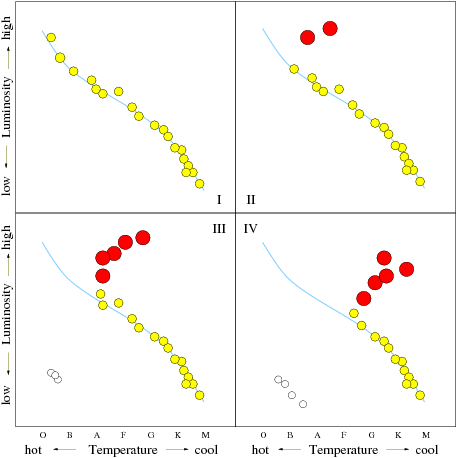In a stellar cluster (a densely packed group of hundreds of stars), the stars
are all born at roughly the same time, with similar chemical compositions;
they differ only in mass. By examining how many short-lived high-mass and
intermediate-mass stars are still present in a cluster, we can estimate its
age.
In the figure below, four stages of cluster evolution are shown.
Note when both giant stars and white dwarfs start to appear.
| I: | A young cluster, with plenty of hot, blue, high-mass stars |
| II: | A fairly young cluster, missing only the highest of high-mass stars |
| III: | A moderate-age cluster, lacking O and B stars |
| IV: | An older cluster (6 billion years old), with many intermediate-mass |
| | stars evolving off the Main Sequence and turning into giant stars |

